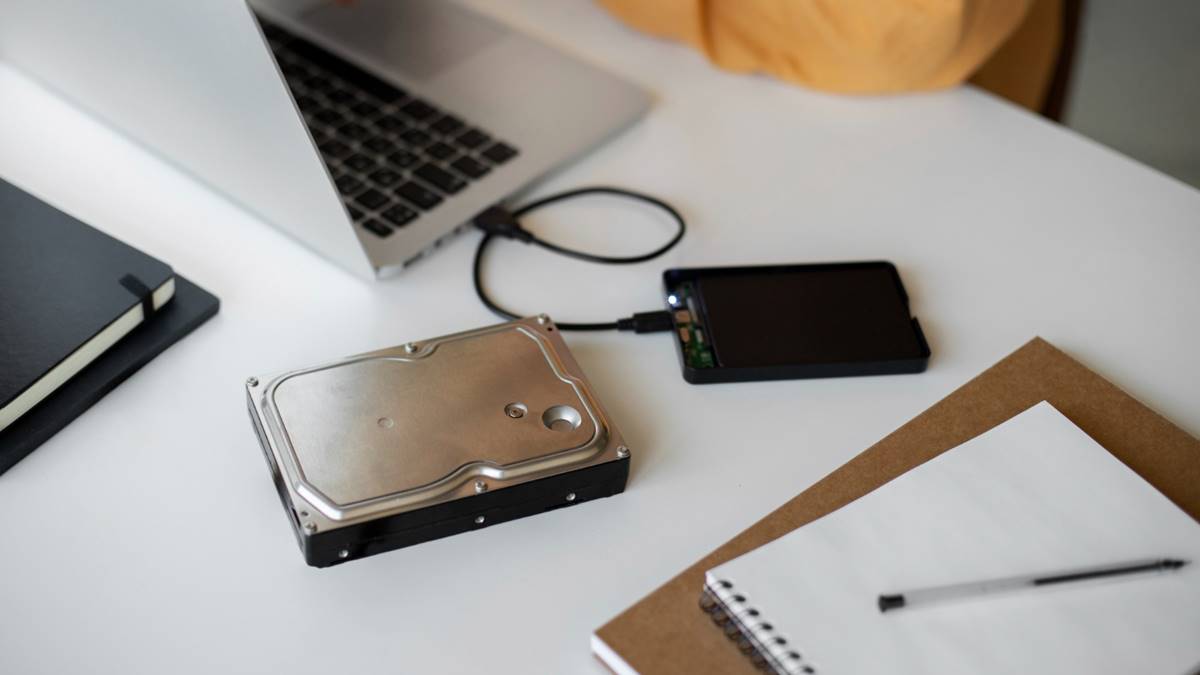Whether you’re building a new computer, upgrading your current setup, or just looking for extra storage, choosing the right hard drive can be surprisingly complex. With so many options available—HDDs, SSDs, hybrid drives, and a range of technical specs—it’s easy to feel overwhelmed.
This guide will walk you through the key factors to consider when selecting a hard drive, whether you’re a beginner or someone more experienced.
HDD vs. SSD: which one do you need?
The first and most important decision is whether you need a traditional hard disk drive (HDD) or a solid-state drive (SSD).
-
HDDs are mechanical drives with spinning disks. They’re typically cheaper and offer larger storage capacities, making them ideal for archiving, backups, and media libraries.
-
SSDs have no moving parts and are significantly faster, quieter, and more energy efficient. They’re best suited for running operating systems, software, and tasks that demand speed—like gaming or video editing.
For many users, the ideal solution is a combination: an SSD for performance and an HDD for storage.
Storage capacity: how much do you really need?
Your storage needs will depend on how you use your device.
-
Casual users (web browsing, documents, some photos): 250 GB to 500 GB is usually enough.
-
Gamers or media enthusiasts: 1 TB or more is often necessary to accommodate large files.
-
Creative professionals (video, design, music): 2 TB and above may be required.
Always consider future needs too—storage fills up faster than you think.
Speed matters: RPM and interface types
If you’re opting for an HDD, pay attention to the RPM (revolutions per minute). Most consumer drives are 5400 RPM or 7200 RPM. The higher the RPM, the faster the data can be read and written.
For SSDs and modern HDDs, the interface is key:
-
SATA III: Common and affordable, but slower than newer alternatives.
-
NVMe over PCIe: Extremely fast, ideal for gaming, creative work, and anyone seeking lightning-fast performance.
Reliability and endurance
Storage is only useful if it’s reliable. Look for hard drives from reputable manufacturers (such as Western Digital, Seagate, Samsung, or Crucial) and check their MTBF (Mean Time Between Failures) or TBW (Total Bytes Written) in the case of SSDs.
Also consider:
-
Warranty length (2–5 years is standard)
-
Shock resistance (especially for portable drives)
-
Heat and noise levels (important for compact or quiet setups)
External or internal?
Do you need storage inside your device or outside of it?
-
Internal drives are great for desktops and laptops you can open up.
-
External drives (USB or Thunderbolt) offer portability and ease of use, and they’re perfect for backups or transferring large files between systems.
Portable SSDs are increasingly popular thanks to their speed, size, and durability.
Bonus: hybrid solutions
Some users may consider SSHDs (solid-state hybrid drives), which combine a small amount of SSD with traditional HDD storage. These can speed up boot times and frequently used applications, but the performance won’t match a full SSD.
They’re a decent middle ground if you want faster speeds on a tighter budget.
Final tips before you buy
-
Double-check compatibility with your device (size, interface, operating system support)
-
Use tools or forums to compare user reviews and reliability
-
Look for deals, but avoid suspiciously cheap no-name brands
-
Consider using cloud storage as a supplement, not a replacement
Conclusion
Choosing the right hard drive doesn’t have to be complicated if you understand your needs and what each option offers. Whether you’re a beginner building your first PC or an advanced user upgrading a workstation, the right combination of speed, capacity, and reliability will go a long way in improving your digital experience.
Original article: https://itmagazin.hu/hogyan-valasszunk-jo-merevlemezt-utmutato-kezdoknek-es-haladoknak/
Website: itmagazin.hu
